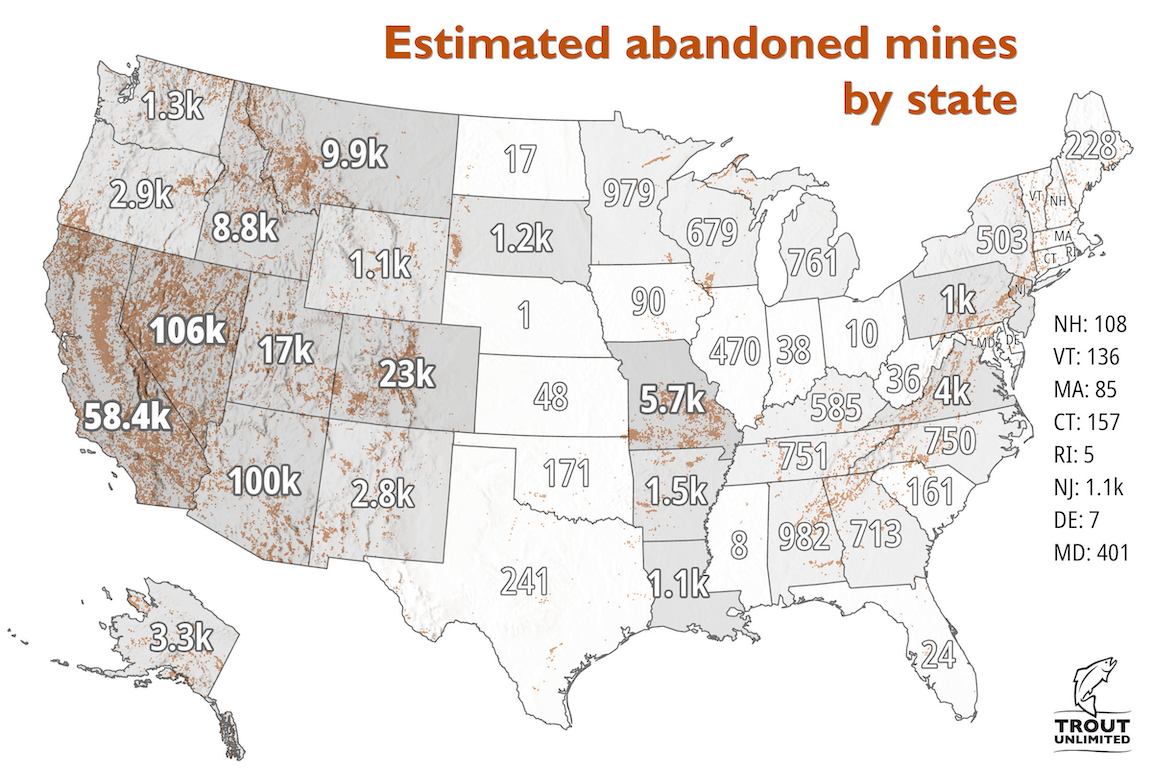The Environmental Impact Of Abandoned Gold Mines: Pollution And Cleanup

Table of Contents
H2: Types of Pollution from Abandoned Gold Mines
The environmental impact of abandoned gold mines manifests in various forms of pollution, significantly affecting both terrestrial and aquatic ecosystems.
H3: Water Pollution
Acid mine drainage (AMD) is a primary concern. This process occurs when sulfide minerals in exposed mine waste react with air and water, producing sulfuric acid. This acidic water then leaches heavy metals from the surrounding rocks and soil, contaminating nearby water bodies. The consequences are severe.
- Elevated heavy metal concentrations in drinking water: Arsenic, mercury, and lead are particularly toxic heavy metals commonly found in AMD, posing significant risks to human health. Long-term exposure can lead to various health problems, including neurological damage and cancer.
- Damage to aquatic ecosystems, including fish kills: The low pH and high concentrations of heavy metals in AMD render aquatic environments uninhabitable, resulting in widespread fish kills and the disruption of entire ecosystems. This impacts biodiversity and the delicate balance of aquatic life.
- Bioaccumulation of toxins in the food chain: Heavy metals bioaccumulate in aquatic organisms, increasing their concentration as they move up the food chain. This poses a risk to humans who consume contaminated fish and other aquatic life.
H3: Soil Contamination
The heavy metal contamination from AMD also significantly impacts soil health.
- Reduced agricultural productivity: Heavy metals inhibit plant growth and reduce soil fertility, making agricultural land unproductive. This directly impacts food security in affected regions.
- Habitat degradation for wildlife: Soil contamination affects the health and survival of terrestrial organisms. Heavy metal toxicity can disrupt plant and animal life cycles, leading to habitat degradation and biodiversity loss.
- Potential for human exposure through contaminated food sources: Contaminated soil can affect the growth of crops, leading to human exposure through the consumption of contaminated food. This is a significant concern for communities living near abandoned mines.
H3: Air Pollution
While less prominent than water and soil contamination, air pollution is also a concern from abandoned gold mines.
- Respiratory problems in nearby populations: Particulate matter and other airborne pollutants released during mining and post-mining activities can cause respiratory problems in nearby communities. Dust containing heavy metals poses a particular risk.
- Contribution to air quality issues in regional areas: The cumulative effect of multiple abandoned mines can contribute to regional air quality problems, affecting broader populations.
- Potential impact on climate change (though generally less significant than other sources): While less significant compared to other sources, some mining activities can contribute to greenhouse gas emissions and impact climate change.
H2: The Challenges of Cleaning Up Abandoned Gold Mines
Remediating the environmental impact of abandoned gold mines presents substantial challenges.
H3: Financial Constraints
The cost of remediation is often prohibitive.
- Limited government budgets: Governments often lack the financial resources to undertake large-scale remediation projects.
- Difficulty in identifying responsible parties: Pinpointing responsible parties for cleanup can be challenging, especially with abandoned mines where ownership is unclear or the responsible companies are defunct.
- Reliance on charitable organizations and international aid: Cleanup efforts often rely on the support of charitable organizations and international aid, which may not always be sufficient.
H3: Technical Difficulties
The technical challenges are significant.
- Development of effective and cost-efficient technologies: Developing effective and affordable technologies to treat AMD and remove heavy metals from soil and water is crucial for successful remediation.
- Long-term monitoring and maintenance required: Remediation is not a one-time effort; long-term monitoring and maintenance are necessary to ensure the effectiveness of the cleanup.
- Challenges in accessing remote or inaccessible sites: Many abandoned mines are located in remote or difficult-to-access areas, hindering remediation efforts.
H3: Legal and Regulatory Hurdles
Inadequate regulations and enforcement further complicate the situation.
- Weak or unenforced environmental laws: Weak environmental regulations and inadequate enforcement in some regions allow for the continued pollution from abandoned mines.
- Delays in legal proceedings: Legal processes to determine liability and secure funding for cleanup can be lengthy and complex, delaying remediation efforts.
- Difficulties in assigning responsibility for cleanup costs: Assigning responsibility for cleanup costs can be challenging, especially when multiple parties are involved or when the responsible parties are no longer in operation.
H2: Sustainable Mining Practices and Prevention
Preventing the creation of future abandoned mine sites is paramount.
- Implementing stringent environmental impact assessments: Thorough environmental impact assessments before mining commences are essential to minimize potential damage.
- Developing and adhering to comprehensive mine closure plans: Comprehensive mine closure plans should be developed and strictly adhered to, ensuring responsible management of mine waste and the prevention of future pollution.
- Investing in innovative remediation technologies: Investment in research and development of innovative and cost-effective remediation technologies is vital.
- Promoting transparency and accountability in the mining industry: Increased transparency and accountability within the mining industry are crucial to ensure responsible environmental practices.
3. Conclusion
The environmental impact of abandoned gold mines is severe and far-reaching, causing widespread water, soil, and air pollution. The challenges of cleaning up these sites are significant, encompassing financial, technical, and legal hurdles. However, by adopting sustainable mining practices, developing effective remediation technologies, and strengthening environmental regulations, we can significantly mitigate the environmental impact of abandoned gold mines and prevent future disasters. Understanding the environmental impact of abandoned gold mines is a crucial first step. Let's work together to promote sustainable mining practices and demand accountability for the environmental legacy of past gold mining operations. Investing in responsible mining and effective remediation strategies is not just an environmental imperative; it's an investment in the health and well-being of communities worldwide.

Featured Posts
-
 Tracee Ellis Rosss Stunning Liquid Leather Dress Transformation In Nyc
May 06, 2025
Tracee Ellis Rosss Stunning Liquid Leather Dress Transformation In Nyc
May 06, 2025 -
 The Retro Trainer A Style Icons Choice Suki Waterhouse
May 06, 2025
The Retro Trainer A Style Icons Choice Suki Waterhouse
May 06, 2025 -
 Ndae Alhjylan Rsalt Slam Mn Ajl Ymn Bla Dmae
May 06, 2025
Ndae Alhjylan Rsalt Slam Mn Ajl Ymn Bla Dmae
May 06, 2025 -
 Stiven King Novi Zayavi Pro Trampa Ta Maska Pislya Povernennya V X
May 06, 2025
Stiven King Novi Zayavi Pro Trampa Ta Maska Pislya Povernennya V X
May 06, 2025 -
 Obtaining Sabrina Carpenters Fortnite Outfits A Step By Step Guide
May 06, 2025
Obtaining Sabrina Carpenters Fortnite Outfits A Step By Step Guide
May 06, 2025
